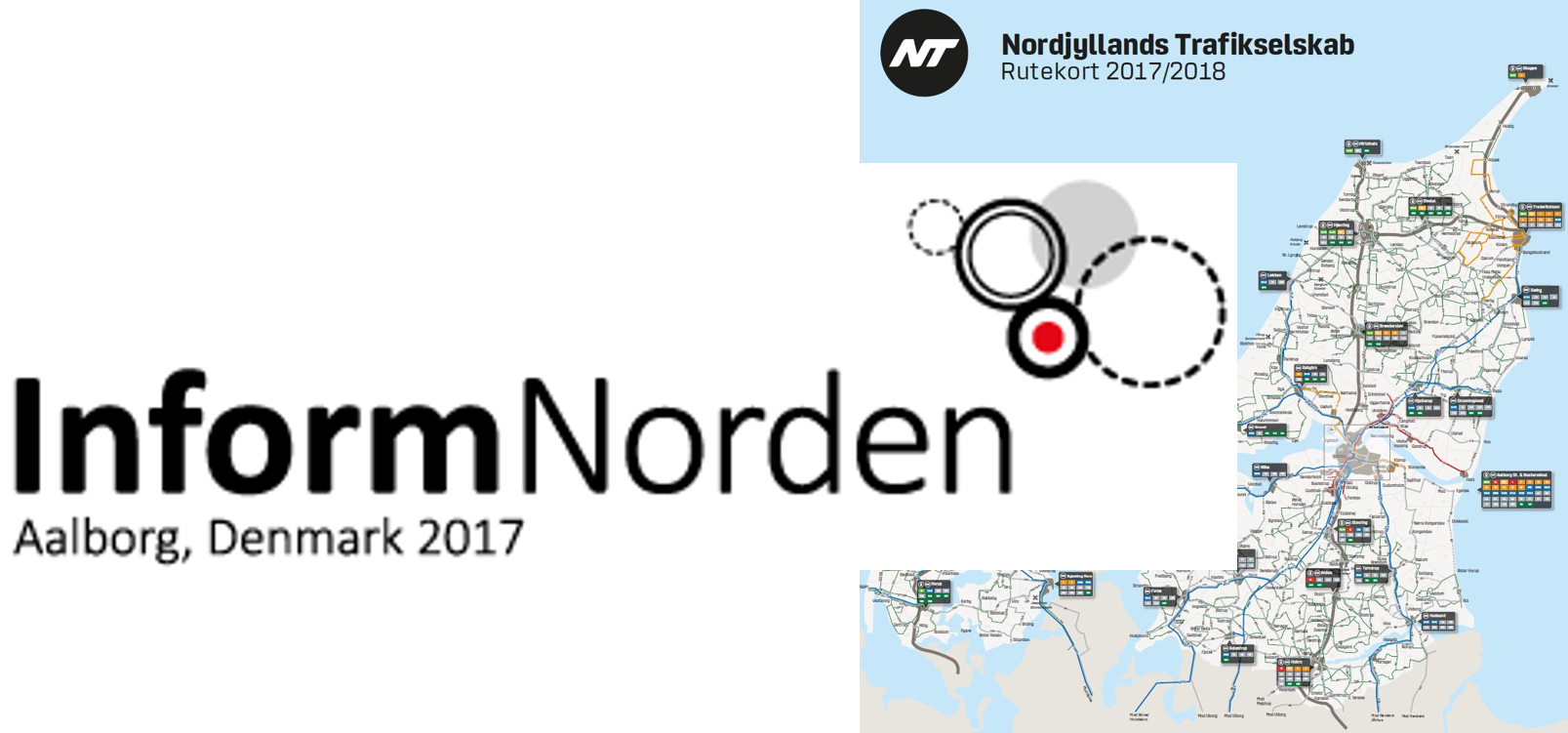
My takeaways and reflections from last week’s InformNorden Conference for Public Transport Information Technology.
1. MaaS has a role also for rural areas
Nordjyllands Trafikselskab is piloting MaaS for rural areas, reported Jens Otto Størup, Nordjyllands Trafikselskab, Denmark. Within areas with low or no public transit service you can be picked up by a cab at your door and delivered at a bus stop for transfer to public transport to your destination.
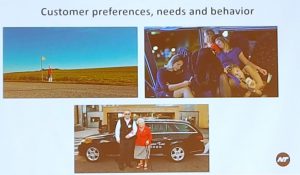 MaaS is important also for mobility in rural areas. Source: Jens Otto Størup, Nordjyllands Trafikselskab.
MaaS is important also for mobility in rural areas. Source: Jens Otto Størup, Nordjyllands Trafikselskab.
You pay only the public transit fare for the ride. The public transit authority picks up the rest of the cab fare. You may have to accept a detour to pick up other passengers in need of transfer at the same time as you.
Reflection: interesting approach of providing public transport in rural areas based on user needs rather than infrequent scheduled bus routes. Using MaaS technologies and geo-fencing you can decide whether an otherwise expensive cab ride can be made available to the passenger to ensure access to the shared mobility grid.
You can build in support in the cloud for any shared mobility journeys whether the customer pays all the cost of the transport, part of it or a third party picks up the total bill.
2. From Public Transport to Passenger Transport with Shared Resources
Samtrafiken in Sweden is reinventing themselves from supporting common services for actors in public transit to support all actors for shared mobility.
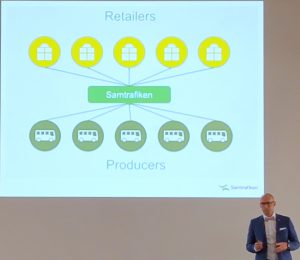 Swedish Mobility Program by Samtrafiken Source: Jens Tångefjord Brodin, Samtrafiken, Sweden
Swedish Mobility Program by Samtrafiken Source: Jens Tångefjord Brodin, Samtrafiken, Sweden
Reflection: Interesting that Samtrafiken, by its construction, already knows how to navigate in a public private partnership arena. Now they “just” expands the number of partners. Also, note that Samtrafiken does not plan front the customers with MaaS services. The concept aims to provide some agreed house rules and common services and agreements for an open marketplace for shared mobility.
3. Move Count down to the next bus to the neighborhood of a bus stop and even into hallways
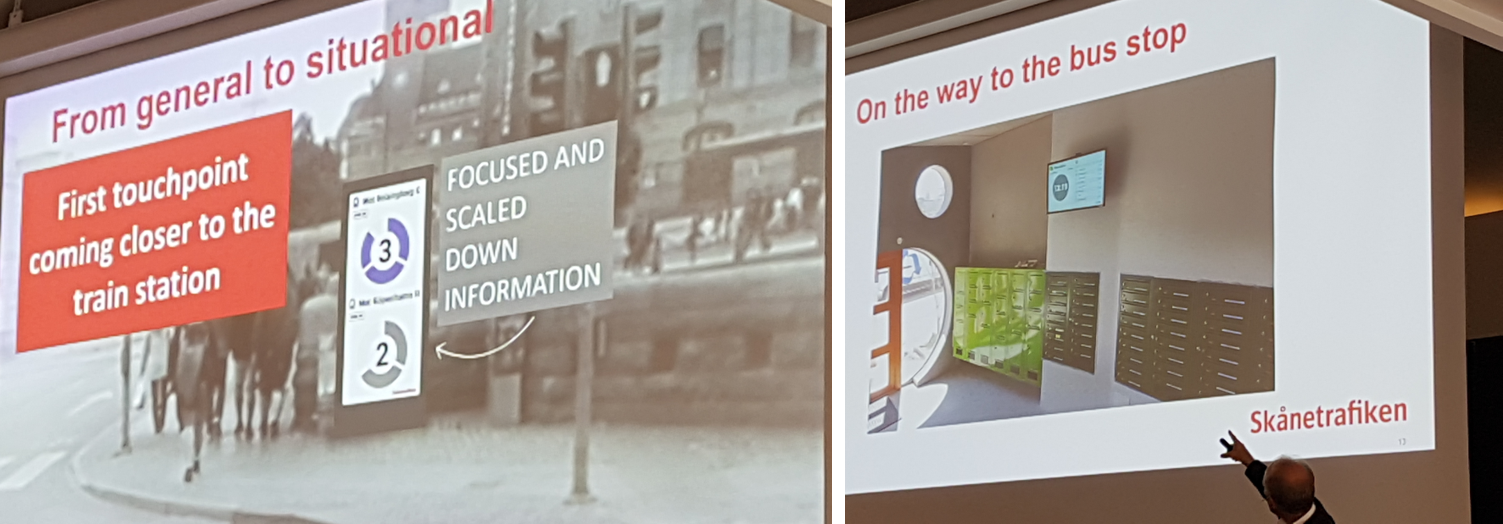
Touchpoints to nudge people to take the bus and train. Source: Mårten Rignell, Skånetrafiken
How long time to the next bus or train is crucial information when relying on mobility through public transport. Mårten Rignell, Skånetrafiken, Sweden provided good insight in how Skånetrafiken improves the travel experience by innovation of in street and in vehicle information.
Reflection: Good inspiration to help people opt in for public transit rather than the car. You could argue that an app will give you the same information but that requires that you are motivated to check for public transport options. Relevant up to the minute displays in the public can inform and nudge people to consider public transit rather than a private car. However if the countdown says 55 minutes to next bus, the nudging effect may be opposite the intention.
4. What does it take to change a habit

A wonderful illustration on the pros and cons for changing a habit presented by Mårten Rignell from Skånetrafiken, Sweden.
Reflection: Consider what it takes to change the habit from using your own car to use public transport. The perceived flexibility of a car is strong amongst car owners.
Even more radical: What does it take to change your habit of dreaming of the next car you want to own to decide to not owning a car and enjoy the freedom of shared mobility?
The car industry has 100 years of experience and plenty of marketing muscles to influence and intrigue us. How can shared mobility and MaaS compete against car ownership without the same amount of influencing capacity?
5. Fail on a weekly basis to create better public Transport
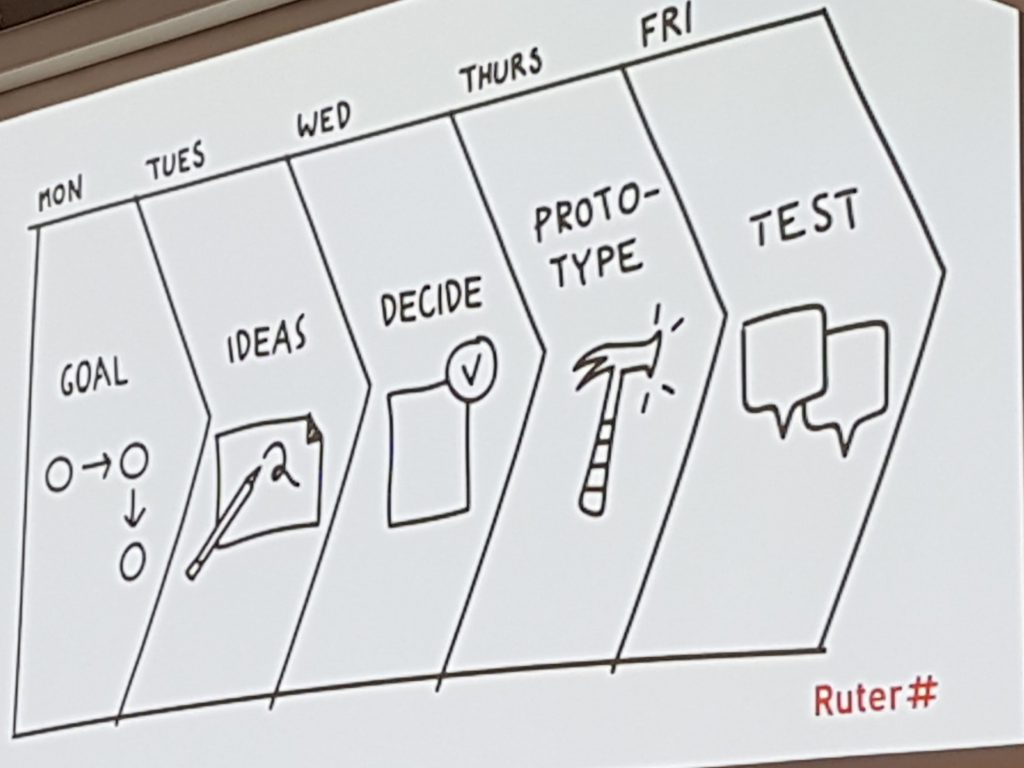
A typical week for developing digital customer experiences at Ruter. Source Eivind Skogen, Ruter
Eivind Skogen from Ruter delivered an inspiring look into the machine room of innovation at Ruter, Norway
The most radical element is real user test of prototypes on Fridays based on the result of something nobody knew at the start of the week.
Reflection: Empowering teams to create incremental enhancements to services requires a radical change of mindset throughout the organization. Typically, public owned organizations like public transit spends a lot of (management) time to decide what should be developed. Then more time is spent on making specifications inhouse for procurement. The question is whether users are invited at all for feedback? The procurement cycle adds to the time to implement and the result is that the total time to deliver a new service takes a year or more rather than weeks and months.
In a traditional zero error culture, it is refreshing to see a public transit company displaying a slide saying, “We fail – signed Ruter”
Ruter has made the transition from failure is not an option to failure fast is the only option to advance services.
6. Scoop all the best from open source, everything online, in-house agile development and real time big data
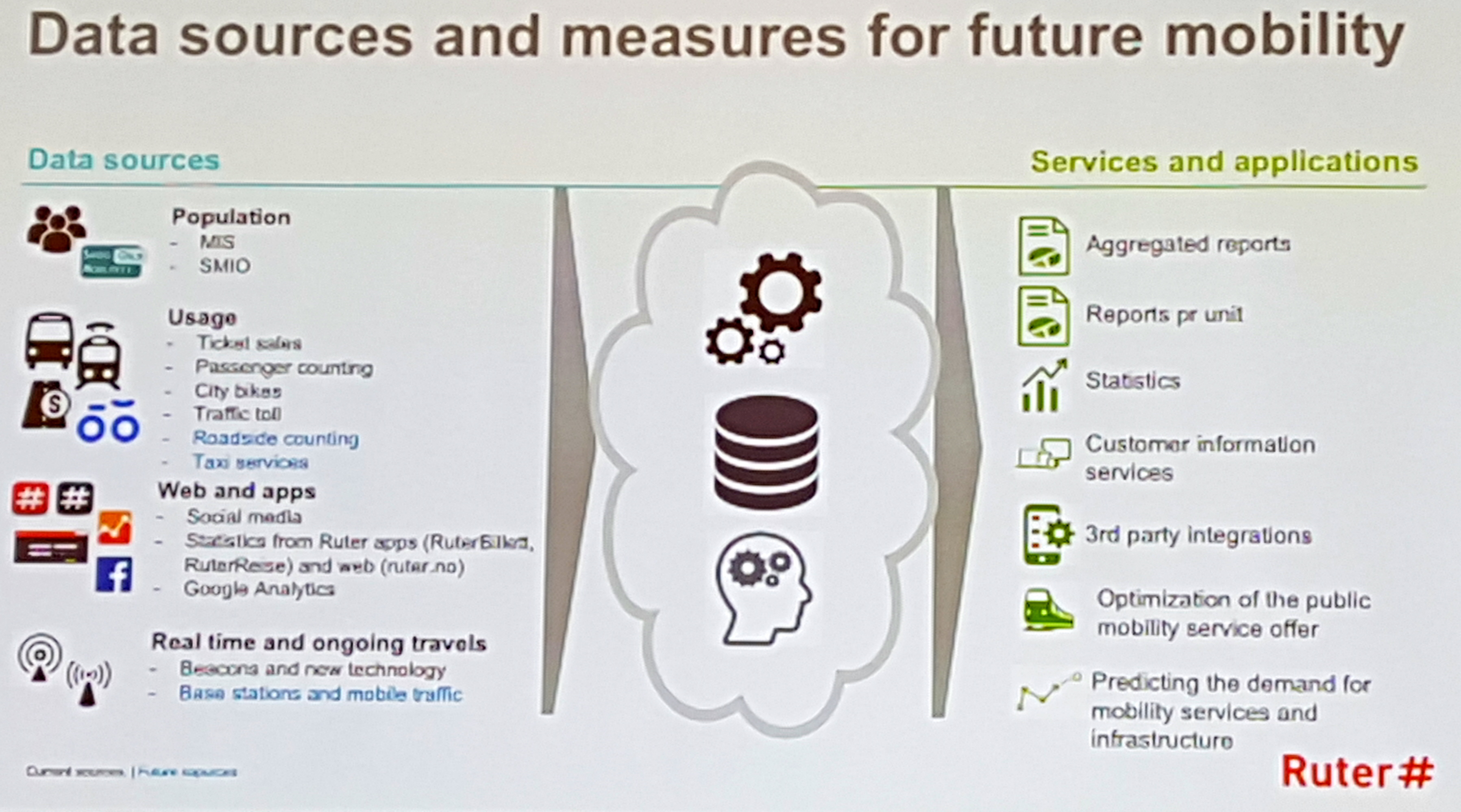
Using Data from many sources to improve service in Ruter. Source Terje Storhaug, Ruter, Norway
Terje Storhaug from Ruter provided an energetic insight in the Ruter strategy for improving public transport services by using modern incremental development strategies. By Scooping all the best from Open Source, everything online, in-house agile development and real time big data Ruter has a wealth of tools available to create better public transit, automatic fare collection and better customer guidance on incidents.
Reflection: By using open source and insisting on understanding and test and fail new approaches in-house fast, you can minimize vendor lock ins and traditional long development cycles.
You may consider whether in-house incremental development of public transit services are more cost and time efficient and less risky than the standard specification, procurement and implementation way of providing the next generation of services?
About the conference:
This year’s InformNorden conference for Public Transport Information Technology was held in Denmark in the city of Aalborg. Aalborg is in the Northern part of Jutland and is part of Region Jutland North.
Thank you for a well-managed conference and social activities to InformNorden planning team and especially to the staff from Nordjyllands Trafikselskab for running the show.
About InformNorden:
InformNorden aims at bringing together users and suppliers of Public Transport Information Technology to stimulate the use and development of IT in public transport by exchange of experience, requirements and standards. Read more here http://nordicpublictransport.com/
Further discussion and contacts:
How do we best accelerate use of shared mobility to reduce congestion and improve air quality in cities. Where to start and what are the pitfalls. Follow my blog here and updates on LinkedIn.
My mission is to help facilitate better shared mobility and MaaS. What is your challenge on shared mobility? Take the opportunity to open a dialogue directly with me here or email directly here.
